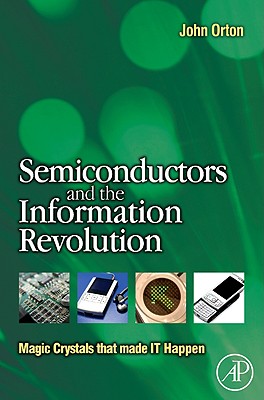You are here
Back to topSemiconductors and the Information Revolution: Magic Crystals That Made IT Happen (Paperback)
Email or call for price
Description
Semiconductors and the Information Revolution sets out to explain the development of modern electronic systems and devices from the viewpoint of the semiconductor materials (germanium, silicon, gallium arsenide and many others) which made them possible. It covers the scientific understanding of these materials and its intimate relationship with their technology and many applications. It began with Michael Faraday, took off in a big way with the invention of the transistor at Bell Labs in 1947 and is still burgeoning today. It is a story to match any artistic or engineering achievement of man and this is the first time it has been presented in a style suited to the non-specialist. It is written in a lively, non-mathematical style which brings out the excitement of discovery and the fascinating interplay between the demands of system pull and technological push. It also looks at the nature of some of the personal interactions which helped to shape the modern technological world.
An introductory chapter illustrates just how dependent we are on modern electronic systems and explains the significance of semiconductors in their development. It also provides, in as painless a way as possible, a necessary understanding of semiconductor properties in relation to these applications. The second chapter takes up the historical account and ends with some important results emerging from the Second World War - including its effect on the organisation of scientific research. Chapter three describes the world-shaking discovery of the transistor and some of the early struggles to make it commercially viable, including the marketing of the first transistor radio. In chapter four we meet the integrated circuit which gave shape to much of our modern life in the form of the personal computer (and which gave rise to a famously long-running patent war ). Later chapters cover the application of compound semiconductors to light-emitting devices, such as LEDs and lasers, and light detecting devices such as photocells. We learn how these developments led to the invention of the CD player and DVD recorder, how other materials were applied to the development of sophisticated night vision equipment, fibre optical communications systems, solar photovoltaic panels and flat panel displays. Similarly, microwave techniques essential to our modern day love of mobile phoning are seen to depend on clever materials scientists who, not for the first time, "invented" new semiconductors with just the right properties.
Altogether, it is an amazing story and one which deserves to be more widely known. Read this book and you will be rewarded with a much deeper understanding and appreciation of the technological revolution which shapes so many aspects of our lives.
